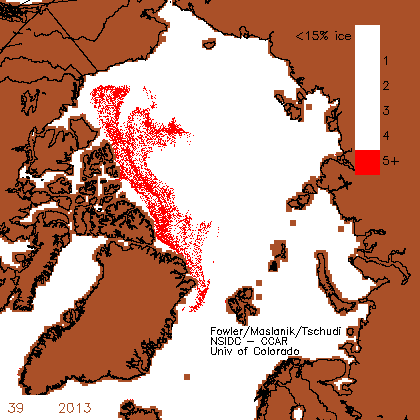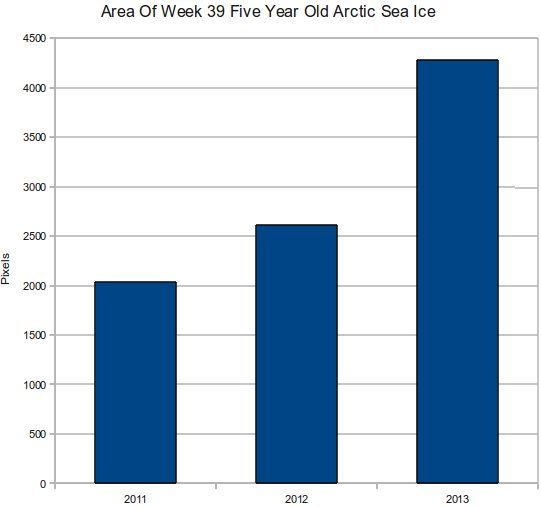The amount of five year old ice in the Arctic has more than doubled over the past two years, as seen in the animation below.
Disrupting the Borg is expensive and time consuming!
Google Search
-
Recent Posts
- Fact Checking NASA
- Fact Checking Grok
- Fact Checking The New York Times
- New Visitech Features
- Ice-Free Arctic By 2014
- Debt-Free US Treasury Forecast
- Analyzing Big City Crime (Part 2)
- Analyzing Big City Crime
- UK Migration Caused By Global Warming
- Climate Attribution In Greece
- “Brown: ’50 days to save world'”
- The Catastrophic Influence of Bovine Methane Emissions on Extraterrestrial Climate Patterns
- Posting On X
- Seventeen Years Of Fun
- The Importance Of Good Tools
- Temperature Shifts At Blue Hill, MA
- CO2²
- Time Of Observation Bias
- Climate Scamming For Profit
- Climate Scamming For Profit
- Back To The Future
- “records going back to 1961”
- Analyzing Rainfall At Asheville
- Historical Weather Analysis With Visitech
- “American Summers Are Starting to Feel Like Winter”
Recent Comments
- arn on Fact Checking NASA
- Gordon Vigurs on Fact Checking NASA
- Bob G on Fact Checking NASA
- Bob G on Fact Checking NASA
- arn on Fact Checking NASA
- conrad ziefle on Fact Checking NASA
- conrad ziefle on Fact Checking NASA
- arn on Fact Checking NASA
- Bob G on Fact Checking NASA
- Bob G on Fact Checking NASA




A potentially dumb question, but how one measure the age of ice? Is this a measurement of ice thickness from which one infers age?
The University of Colorado tracks specific floes of ice from week to week.
Nah nah nah, it’s gotta be 10^H^H20^H^H30 years of ice to be a legit trend.
What do you think Steve?
Look about right?
I am no climate scientist, just an arm chair denier.
https://twitter.com/NJSnowFan/status/396274679897260032/photo/1
It looks to me like the AMO temperature rise for the last thirty years or so has followed the same pattern that it did in 1920 to 1950 or so — before CAGW was a factor. If the current AMO pattern is just another repeat of the earlier natural variation, then how has CO2 done anything noticeable?
As for the change in Arctic ice, we do not have so much verifiable info on what it did during the last AMO rise of 1920ish to 1950ish. Anecdotal, there was a similar shrinking of ice, followed by a rise when the AMO went negative.
So, of the two charts, the AMO shows nothing unusual. Unfortunately, the ice chart is not comparable to the AMO chart because it does not have data for comparison.
Barrow Alaska is cold today -4F, Flash freeze of ocean, Barrow will not see open water till next summer after this weekend. My call
http://seaice.alaska.edu/gi/observatories/barrow_webcam
Why don’t you do another one where you compare 2000 to 2013.